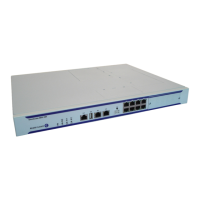Service Entities
Page 38 7750 SR OS Services Guide
• Frame Relay — Supports the switched data link layer protocol that handles multiple
virtual circuits.
Figure 7: Multiple SAPs on a Single Port/Channel
Default SAP on a Dot1q Port
This feature introduces default SAP functionality on dot1q-encapsulated ports. This is similar to
the functionality provided by Q1* SAP on q-in-q encapsulated ports, meaning that on dot1q-
encapsulated ports where a default SAP is configured, all packets with q-tags not matching any
explicitly defined SAPs will be assigned to this SAP.
One of the applications where this feature can be applicable is an access connection of a customer
who uses the whole port to access Layer 2 services. The internal VLAN tags are transparent to the
service provider. This can be provided by a null encapsulated port. A dedicated VLAN (not used
by the customer) can be used to provide CPE management.
In this type of environment, logically two SAPs exist, a management SAP and a service SAP. The
management SAP can be created by specifying a VLAN tag which is reserved to manage the CPE.
The service SAP covers all other VLANs and behaves as a SAP on a null-encapsulated port.
There a few constraints related for the use of default SAP on a dot1q-encapsulated port:
• This type of SAP is supported only on VPLS and EPIPE services and cannot be created in
IES and VPRN services as it cannot preserve VLAN tag markings.
• For VPLS SAPs with STP enabled, STP listens to untagged and null-tagged BPDUs only.
All other tagged BPDUs are forwarded like other customer packets. This is the same
behavior as null-encapsulated ports.
OSSG003
Customer
27
Network
SAP
2/1/5
dot1q
PORT #1
SAP
3/1/6
dot1q
Service
Service
SDP
Customer
27
SAP
1/2/3
dot1q
Customer
9

